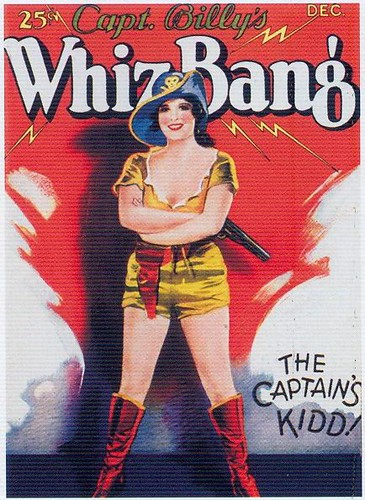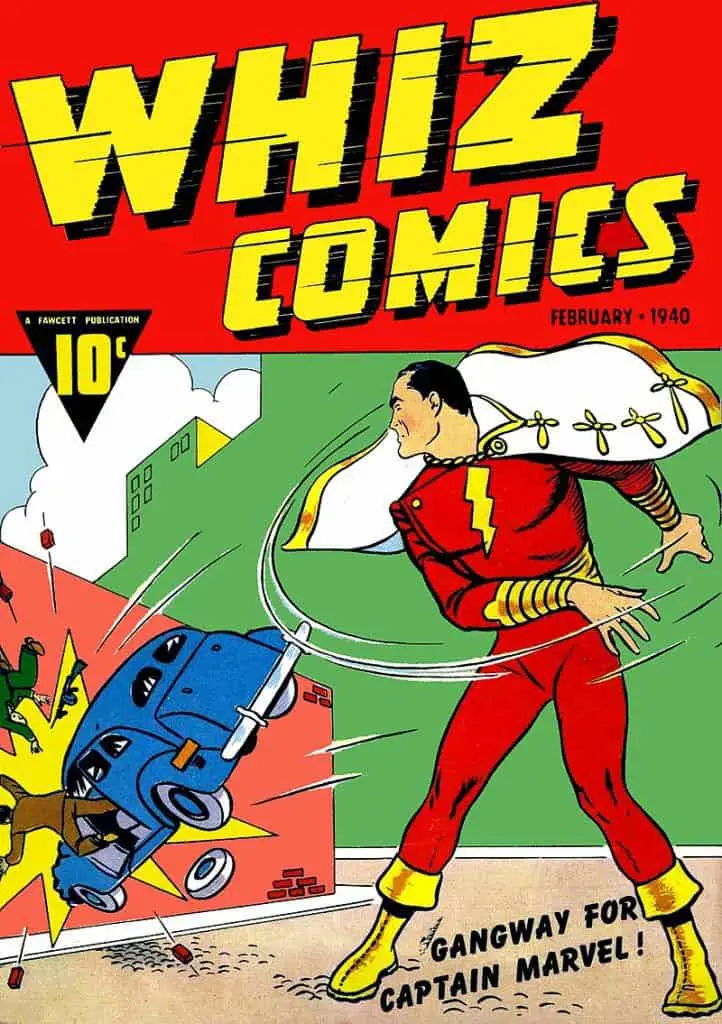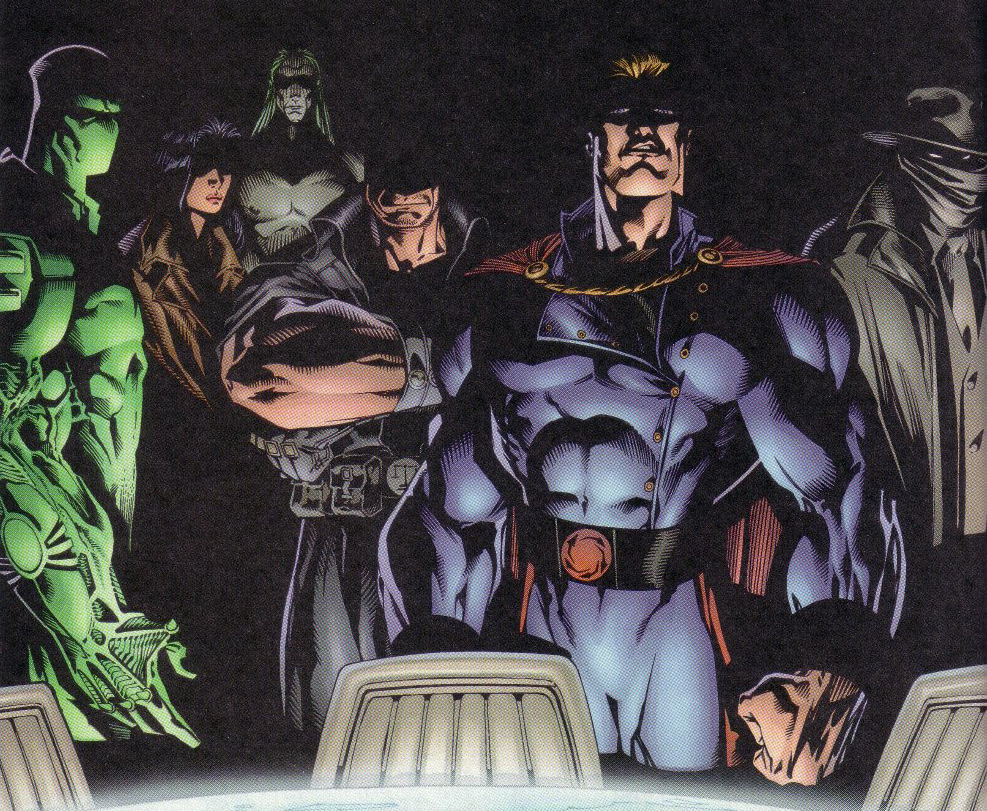|
|
Post by Slam_Bradley on Apr 21, 2020 16:56:28 GMT -5
 Planetary #2 by Ellis and Cassaday Planetary #2 by Ellis and CassadayHow better to follow-up on the battle between pulp heroes and comic book super-heroes than with Kaiju? The Planetary field team is summoned to Japan as a Japanese paramilitary group enters the off-limits environs of Island Zero. Ellis and Cassaday don’t really play “hide the ball” as we get a two-page spread of a dead and decomposing version of Mothra on pages 4-5. Island Zero was put off-limits following WWII, there are bad guys there that may learn things they shouldn’t and Planetary needs to stop them (although there is also a defense force on the island). And really that’s pretty much it.  For all that the plot summary is short this is a super fun issue. And there’s a fair bit to digest here. The antagonist in the work “Master Storyteller” is a fairly obvious analog of Yukio Mishima and this story came out only about four years after the Japanese subway attack by Aum Shinrikyo. And then there’s the big point. The Kaiju. I don’t pretend to be an expert. But the genre pretty clearly grew out of a society that had been devastated by war, had been subjected to nuclear bombing and had every right to fear the consequences of the use of nuclear weapons. The monsters of Island Zero came about in the aftermath of the bombing of Nagasaki. Ellis, through Jakita, doesn’t tell us exactly what happened. But there were monsters.   Along the way we learn a bit more about Planetary and its field agents. There are Planetary offices all over the world. Snow has heat-based powers and we see him “subtracting heat to congeal poison gas.  “It does us good to have our genitals frozen into small blue dead things.” |
|
|
|
Post by codystarbuck on Apr 21, 2020 17:21:55 GMT -5
This one captures a lot of things. there is a very strong conservative element in Japanese society, which Aum Shinrikyo was an extreme form Mishima was the same, calling for a return to the samurai values, which was also a propaganda tool of the right Wing militarists who controlled Japan during the build up and fighting of WW2. It fits perfectly as those Right Wing forces want the 1947 constitution abolished and the re-establishment of a full-scale military, including weapons of mass destruction. Kaiju are metaphors for nuclear weapons and the havoc they wreak is meant to invoke the horrors of Hiroshima and Nagasaki. That all blends well together here.
The monsters and skeletons are close enough to invoke the Toho stars, without getting sued. I especially enjoyed this as an example of their archeological work, while also showing them as superheroes, which was the real hook to this series. Each issue explores some tangent or ancestor to comic books, letting the characters play within that world. It's almost like a blog within a comic book story.
|
|
|
|
Post by Slam_Bradley on Apr 21, 2020 17:35:06 GMT -5
The monsters and skeletons are close enough to invoke the Toho stars, without getting sued. I especially enjoyed this as an example of their archeological work, while also showing them as superheroes, which was the real hook to this series. Each issue explores some tangent or ancestor to comic books, letting the characters play within that world. It's almost like a blog within a comic book story. The early issues, in particular, are a jaunt through various pop culture interests. I found it absolutely captivating when the early issues came out. It was just a great hook. And the idea of archaeologists of the strange lends itself to almost unlimited options. |
|
|
|
Post by Slam_Bradley on Apr 28, 2020 13:18:36 GMT -5
 Planetary #3 by Ellis and Cassaday Planetary #3 by Ellis and CassadayIn issue number three Ellis and Cassaday give us another homage to another area of popular culture, in this case Hong Kong/Chinese action films. In this case in particular revenge films. This is an area I’m personally even less versed in than the Kaiju we saw in issue number two. But that didn’t detract from my enjoyment of the story, which is probably a testament to the quality of the work. The book opens (along with the cover) with a ten-page widescreen cinematic tour de force by Cassaday that absolutely feels like at least the storyboard for an action film. The story again is simple. The Planetary team is investigating the ghost of a betrayed Hong Kong cop who haunts the area he was betrayed and takes vengeance on evil-doers.  Along the way we find out that the Hong Kong field office has been in place for six years, far longer than Jakita thought that Planetary had existed as an entity. The team, using Drummer and Jakita’s abilities bring up an actual archeological mystery device, that Drummer describes as a “big stack of hard drives,” that appears to be the souls of the betrayed and that our Ghost Cop describes simply as “God.” (It appears that it is actually an aspect of The Snowflake).  The team is able to talk to and get the story of the Ghost Cop from his lips and a message for his loved ones to enjoy life because there is nothing beyond this one. Because of the cinematic nature of the issue it’s a super-fast read. Even with the expository nature of the third act. But it’s still completely satisfying.  “You people came looking for a mystery. But there is none. There’s just us.” |
|
|
|
Post by codystarbuck on Apr 28, 2020 14:37:33 GMT -5
There are fewer direct homages and more of a stylistic homage to the gun ballets of John Woo and films of people like Ringo Lam and Tsui Hark, though he stuck more to traditional styles of stories with modern methods and cinematography.
I got deep into Hong Kong films, in the 90s and picked up a good reference book on them and looked at the big films; but, a lot of the lower tier stuff was harder to find and I kind of moved on. This brought back memories of films like A Better Tomorrow and City on Fire; and, to a lesser extent, Jackie Chan's Police Story I once attended a Hong Kong film festival, with showings of A Better Tomorrow, Hardboiled, City on Fire, Once Upon a Time in China V and Chinese Ghost Story, all of which fit in well, here.
|
|
|
|
Post by Deleted on May 26, 2020 14:06:57 GMT -5
Started my Planetary reread this morning and devoured the first volume of the trades-All Around the World and Other Stories that contains #1-6 plus the preview story.
-M
|
|
|
|
Post by Slam_Bradley on May 26, 2020 14:08:30 GMT -5
Started my Planetary reread this morning and devoured the first volume of the trades-All Around the World and Other Stories that contains #1-6 plus the preview story. -M I haven't forgotten this thread. I have re-read #4 and 5 I just haven't gotten around to writing them up yet. I got a bit sidetracked on a few other things. But I should get them out in the next day or two. |
|
|
|
Post by Slam_Bradley on May 27, 2020 11:37:18 GMT -5

Planetary #4 by Ellis and CassadayWith the fourth issue Ellis and Cassaday start doing some real world-building for the Planetary team. Not that we hadn’t been getting hints and glimpses of the world as we have gone along. But the creators forgo the homages that we saw in the first three issues and the preview to give us a better look at the world that Planetary will inhabit and explore. This is actually a difficult book to review retrospectively because there is a lot happening under the surface that we aren’t going to fully understand until later in the series. So I’ll try to look at it with the same kind of eyes that saw it when it was first published. The cover is interesting in that it feels old but not really like a pulp cover nor an old comic book cover. After a bit of digging what it reminds me of most is the cover of a copy of Captain Billy’s Whiz-Bang. Given what we will see later that may be intentional. The story itself starts with Jim Wilder, the personal investigator for Anna Hark of Hark industries (same last name as the far east genius who was allied with Doc Brass) beginning an investigation of the destruction of an office building. Wilder is sidetracked in his work as he helps a gentleman who is being mugged and follows the mugger into the blast site where the Planetary crew are investigating a piece of machinery that is sticking out of the ground. Wilder steps on the machinery as he pursues the mugger…and disappears. Wilder reappears with a lightning-like scar on his chest and is taken to a hospital that appears to be run by Planetary where Doc Brass is also a patient. The item that Wilder stepped on transported him to a shift-ship. While interviewing Wilder the crew learns about what shift-ships are, how they travel “The Bleed” which are the channels between the universes that make up “The Snowflake.” The ships need humans to operate and Wilder has volunteered to be one of them and recruit others so that the ship can return home. Wilder transforms into a super-being and takes the gang on a tour of the ship. Cassaday and colorist Laura Depuy turn in a tour-de-force in the design of the interior of the ship…simply beautiful comic art. Ultimately Snow volunteers Planetary resources to help Wilder find others to assist in his voluntary mission to help the ship, even though Snow has no apparent authority to do so.  This is an interesting change up and there’s a lot going on here. There’s a ton of exposition, but it’s so well done that it’s not really noticeable. And we learn far more in this issue about the world surrounding Planetary than we have in the previous 3 ½ issues. Wilder is an interesting character. He’s young and naïve and inherently altruistic. He thinks nothing of helping out a stranger being mugged and of volunteering for what may well be a life-long pursuit to help out an alien ship. There is some superficial likenesses to the original Captain Marvel happening here and I’m glad that Ellis and Cassaday leave them as being less blatant than they might otherwise have.  “Because it’s the right thing to do.” - Jim Wilder |
|
|
|
Post by codystarbuck on May 27, 2020 16:14:12 GMT -5
Well, there is a hint of Captain Billy's Whiz Bang, crossed with the later Fawcett Whiz Comics....   I liked the Art Nouveau stylings, as a departure from the standard Art Deco or ultra high tech. It makes it feel more alien and ancient, since Art Nouveau involved more natural shapes than Deco. It also fits in with the idea of Captain Billy's Whiz bang, which debuted in 1919 and the Art Nouveau Movement was from about 1890 to 1910, as Deco picks up in the 20s. The uniform also suggests a hint of circuitry, enhancing Wilder. Again, this series is pushing my buttons. We've had pulp, kaiju, Honk Kong action cinema; and, now, Art Nouveau Captain Marvel. |
|
|
|
Post by Deleted on Jun 9, 2020 22:41:37 GMT -5
I finished my reread of the series last night/this morning. Damn! this series is so good. I find ore to like each time I reread it. Hoping to see Slam resume his reviews on it, as I am enjoying this thread immensely and curious as to others takes on some of these issues.
-M
|
|
|
|
Post by Slam_Bradley on Jun 10, 2020 10:41:00 GMT -5
I finished my reread of the series last night/this morning. Damn! this series is so good. I find ore to like each time I reread it. Hoping to see Slam resume his reviews on it, as I am enjoying this thread immensely and curious as to others takes on some of these issues. -M I'll definitely be returning. I've just been going through a significant reader's block coupled with a ton of work at the office. |
|
|
|
Post by Slam_Bradley on Jun 11, 2020 12:47:49 GMT -5
 Planetary #5 by Ellis and Cassaday Planetary #5 by Ellis and Cassaday
If issue #1 was about the battle for supremacy between the comics and the pulps, in the fourth issue Ellis and Cassaday give us a love letter to the pulps, one of the progenitors of comic books and the breeding ground for many (most?) of the genres we know and love. But it’s also more than that because this one builds up both Snow and Doc Brass, fills in some of their background and more intimately and explicitly ties Planetary in with the world that Ellis was building in The Authority. This is an extremely quiet issue even by the standards of the comic thus far. The book is a conversation between Snow and Brass interspersed with pulp-like pages showing Brass’ exploits and those of his contemporaries.  The cover is an homage to the Doc Savage covers from the 1970s that were predominantly done by James Bama. The torn shirt and the black background being an almost universal theme as well as Brass’ coloring and hair being based on Bama’s Savage. Again, the story itself is simply Snow and Brass having a conversation. We learn that both Snow and Brass, as well as Jenny Sparks are “Century Babies” long-lived beings of power who were born on January 1, 1900 and grew up with the century. We learn about John Cumberland, a clear Superman analogue though apparently less active than the Man of Steel. Interestingly Snow is seeking advice on the present and how he should proceed from a man who has been trapped in a cave for over fifty years.   Interspersed with the conversation are pages that look like they were ripped from pulps about Doc Brass. Cassaday hits the look (I’m not sure it the wash yellow effect is from colorist DePuy, but I’d guess so) and Ellis writes the prose and the captions in a way that reflect the feel of pulp writing. There are clear instances of both implicit and explicit racism, which Ellis also bring through to Brass’ discussion with Snow. Underlying all of this is the difference between Brass and Snow and also the difference between the pulp age and the (then) current age. At almost all points Brass exudes hope. Both in his conversation and in the pulp pages there’s a palpable sense that thing will be okay and that they will get better. Snow is clearly more cynical possibly due to the time and possibly because he chose not to associate with the world and the wonders around him.   “I was busy.” - Elijah Snow |
|
|
|
Post by codystarbuck on Jun 11, 2020 21:45:31 GMT -5
John Cumberland was The High, the Superman figure in Stormwatch, who returns from sitting int a chair in the Himalayas to save the world from itself, along with some pulpy colleagues.  Funny enough, I had a similar idea when I was trying to concoct a generational superhero concept, after reading the early Wild Cards books, tying them more into historical periods. I had this idea of a superman of the 60s, who was part of the youth movement, Aquarius, who would lead a radical group, seeking to bring an end to Vietnam and great social change, who would clash with government heroes at a student protest that would be an allegory of Kent State. Aquarius would survive, but go into exile, then return later to save the world from itself. Long after I had hit a brick wall, I read Ellis' Stormwatch and there was a variation on the same concept, with The High (and a couple of other storylines). I also had an idea of a Superman, created in the atomic battlefield tests of the late 40s and James Robinson turned up with that idea in The Golden Age and used Tex Thompson, who I had an idea for to be a Right Wing patriotic hero, who sells out his colleagues to HUAC. Robinson was tapping my brain, man. Then again, the Wild Cards series had the Four Aces, a post-war quartet of heroes, working for the government, get attacked by HUAC. Which is what gave me the idea (plus Paul Levitz's idea for why the JSA retired). Ellis loved his own little Wold Newton exercises, with his Century Babies. Same idea, different maguffin. |
|
|
|
Planetary
Jun 11, 2020 21:57:54 GMT -5
via mobile
Post by Slam_Bradley on Jun 11, 2020 21:57:54 GMT -5
Oh yeah, the Wold Newton references in Ellis’ Wildstorm work are readily apparent. He was obviously a fan. It’s been super long since I’ve read either Stormwatch or The Authority so my memory of either is pretty sparse.
|
|
|
|
Post by codystarbuck on Jun 12, 2020 10:29:43 GMT -5
In Stormwatch, he did a riff on Watchmen, to show Jenny Sparks, in the 80s. He also had something like the Altamont stabbing for the 60s/70s. Sadly, the High was introduced before Bryan Hitch was on the art. I liked Ellis' stories in Stormwatch; but, some of the art is excrutiating, until Hitch. He also had the Russian hero take the crew to some Russian bar, where there was some kind of drunken ritual involving nukes, which he kind of repurposed for the spy issue, that is coming up.
|
|